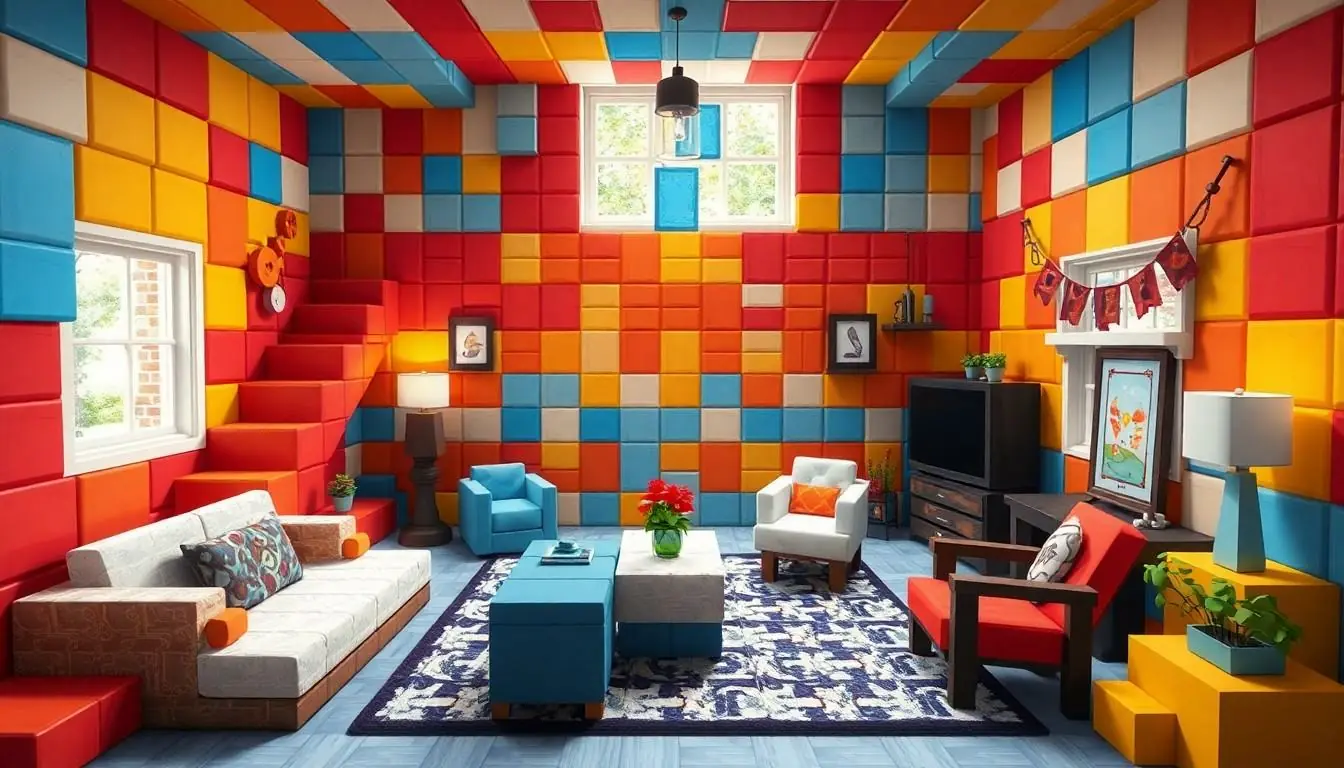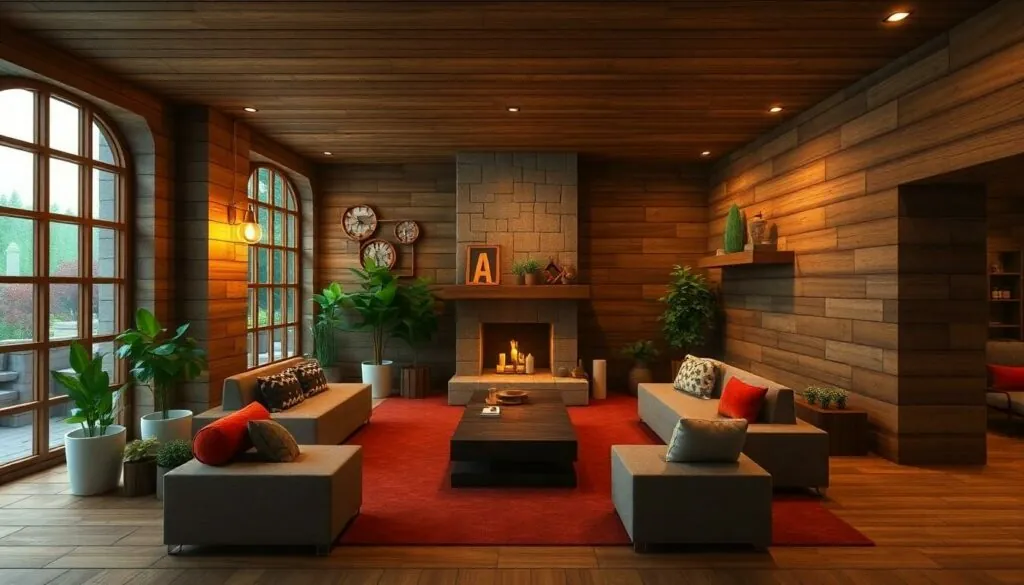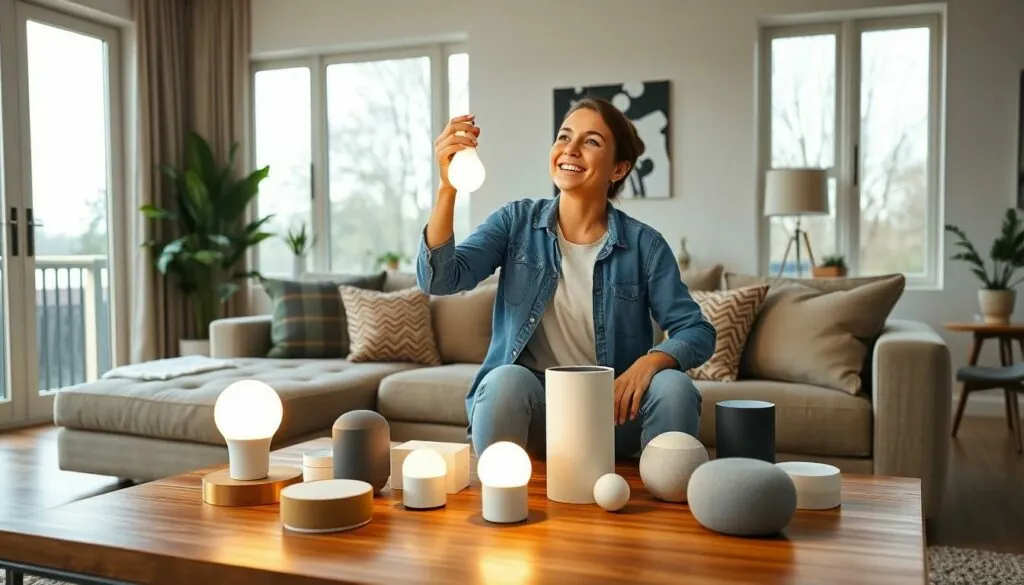In the pixelated universe of Minecraft, where creativity knows no bounds, interior design often gets overshadowed by epic castles and sprawling farms. But let’s face it—who doesn’t want their cozy little abode to feel like a home rather than a hastily built shack? Simple Minecraft interior design can transform a basic structure into a haven of style and functionality, all while keeping the creepers at bay.
Table of Contents
ToggleOverview of Simple Minecraft Interior Design
Creating an inviting space within Minecraft requires creativity and practicality. Players often prioritize functionality while adding aesthetic appeal. Thoughtful combinations of materials like wood, stone, and wool can transform a simple room into a charming environment.
Basic principles guide interior design in Minecraft. For instance, using light sources such as torches and glowstone brightens up areas, enhancing visibility and ambiance. Furniture elements like beds, tables, and chairs not only serve practical purposes but also contribute to a cohesive design.
Color schemes play a vital role in establishing mood. Neutral tones create a calming atmosphere, while vibrant colors can energize a space. Players can experiment with blocks to achieve desired effects by mixing and matching.
Decorative items enrich the overall design. Potted plants, paintings, and item frames add character to interiors. Including these details invites creativity, encouraging players to personalize their structures further.
Layout affects how spaces are perceived. Open floor plans promote movement, while smaller, segmented areas provide intimacy. Arranging furniture thoughtfully can guide player interaction, making experiences more enjoyable.
Storage solutions also enhance functionality. Chests and barrels allow for organized inventory management while blending seamlessly into design. Creative use of hidden compartments can maintain a clean aesthetic, preserving minimalistic preferences.
Overall, simple Minecraft interior design focuses on balancing aesthetics, functionality, and personalization. Players achieve unique and inviting spaces, enriching their in-game experiences. Optimal design can create warmth and charm, making homes feel genuinely lived-in.
Key Elements of Interior Design

Creating a unique space in Minecraft involves key elements that enhance aesthetics and overall functionality. Understanding these components can elevate a player’s interior design experience.
Color Schemes
Choosing the right color scheme significantly impacts the ambiance of any Minecraft build. Players typically favor warm colors like reds and yellows for cozy spaces, while cooler hues such as blues and greens evoke a calm atmosphere. Contrast plays an important role, as combining light and dark shades adds depth to interiors. Utilizing blocks with different textures also brings visual interest, allowing for more dynamic designs. Players often experiment with palettes using concrete, wool, or terracotta, ensuring their spaces reflect personal style while enhancing gameplay.
Furniture Selection
Selecting furniture forms the backbone of any interior design in Minecraft. Essential items like beds, tables, and chairs create a functional living area. Many players garner creativity by utilizing stairs and slabs as seating options, blending functionality with unique aesthetics. Blocks such as fences can serve as railings, giving height variations to furniture. Crafting and positioning storage chests efficiently increases utility without sacrificing style. Incorporating crafted items like item frames or banners adds character, encouraging personalization that resonates with individual tastes.
Tips for Creating Simple Designs
Creating simple designs in Minecraft can enhance the in-game experience significantly. Employing effective strategies makes designing interiors both easy and enjoyable.
Efficient Use of Space
Maximizing space efficiency is crucial in Minecraft interiors. Arrange furniture and decor to avoid overcrowding. Utilize every corner by placing items strategically. Open areas help maintain a sense of spaciousness, while functional layouts improve accessibility. For example, positioning tables near cooking stations streamlines movement. Consider using vertical space as well; shelves or hanging plants can add interest without occupying floor space. Incorporate multi-functional furniture by using blocks that serve dual purposes, like beds that provide storage underneath. Rooms should feel inviting yet spacious, encouraging exploration and creativity.
Adding Personal Touches
Incorporating personal touches personalizes Minecraft interiors. Create unique spaces by selecting favorite decorative items, such as banners or item frames. Choose colors that reflect individual preferences, enhancing ambiance through warm or cool tones. Incorporate themed elements to maintain consistency; for example, a nautical theme might include boats and water blocks. Plants, whether potted or hanging, can introduce life and vibrancy to spaces. Also, consider using custom artwork crafted from maps or paintings, adding character and reflecting player style. Personalizing designs creates a meaningful connection to the created space.
Popular Styles for Simple Interiors
Crafting simple interiors in Minecraft can take various aesthetic forms, each with unique traits. Two popular styles are modern minimalism and rustic charm.
Modern Minimalism
This style emphasizes clean lines and spaciousness, often incorporating neutral colors. Players can use materials like white concrete and glass to achieve a sleek appearance. Fewer decorative elements create a serene environment. Incorporating natural light through large windows enhances the airy feel. Creative use of furniture, like benches or tables from planks, maintains functionality while keeping a tidy look. Using greenery introduces warmth without overwhelming the space.
Rustic Charm
Rustic charm draws inspiration from nature, using raw materials for a cozy effect. Players can utilize oak logs, cobblestone, and wool to achieve an inviting ambiance. Warm tones and textures create comfort in spaces. Adding elements like fireplaces or wooden beams reinforces the authentic feel. Decorative items such as flower pots and paintings can reflect a homely atmosphere. Layering textures through rugs or curtains contributes to overall warmth, inviting players to relax in their crafted homes.
Embracing simple interior design in Minecraft opens up endless possibilities for creativity and personalization. By focusing on practical elements and thoughtful arrangements players can transform their spaces into inviting havens. The balance of color schemes furniture selection and decorative touches creates a unique atmosphere that resonates with individual styles.
Whether opting for modern minimalism or rustic charm each approach enhances the overall aesthetic while maintaining the playful spirit of the game. As players experiment with textures and layouts they’ll discover that even the simplest designs can significantly enrich their Minecraft experience. Ultimately crafting a cozy and stylish home not only adds depth to gameplay but also fosters a deeper connection to the virtual world.





